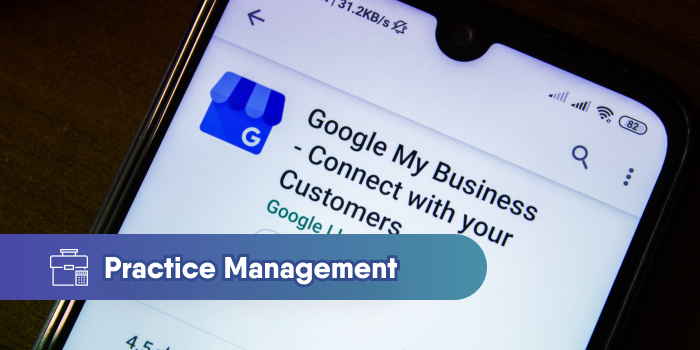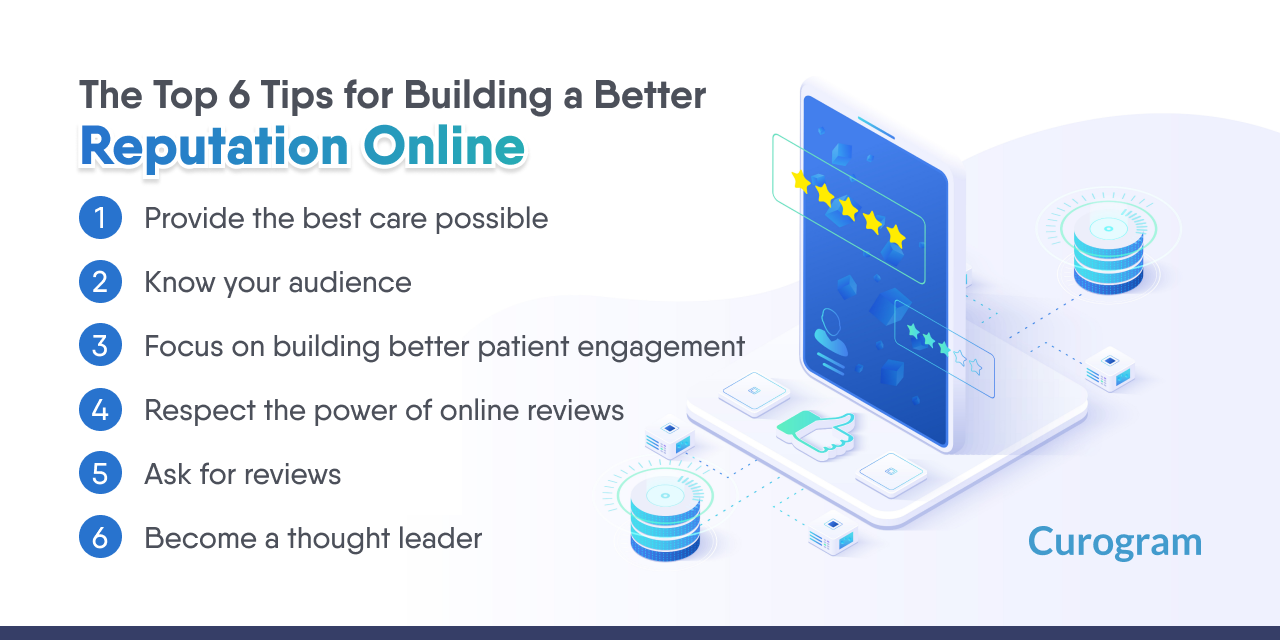Why You Need a Google Business Listing and How To Optimize It
Healthcare organizations receive outstanding rewards and benefits by leveraging laser-focused, location-based marketing strategies. With Google My...

There are many creative ways to increase patient volume in your journey as a medical practitioner, especially now that there are more options because of modern technology. With access to technology, many patients no longer need to visit the closest clinics or hospitals.
The downside, however, is that there are many alternatives, and patients can easily switch healthcare providers when they are unhappy with a service. This is why it’s essential to have a marketing plan to maintain patient volume and reach new patients to continue growing.
How do you start marketing and growing your medical practice while improving patient experience? Here are ten ways to market and grow your medical practice.
Even if your expertise sets you apart from other providers and you’re confident about it, potential patients will not know that by simply looking at your business. This is why branding is essential. Branding helps patients instantly connect with your practice through different mediums, like blogs, websites, social media, or advertising.
What's your Unique Selling Point (USP)? One thing that makes your medical team stand out which helps patients remember your name. Find a color scheme, logo, and business name that makes your brand different from others. Maintain consistency throughout your marketing efforts so that patients can identify advertisements and other information coming from your practice.
Social media is an incredible way to connect with your patients and attract more people to engage with your business online. Facebook is the most popular social media platform that medical practices use for marketing their services or knowledge. You can post health tips, share blog articles, or post news and announcements about your practice’s events.
The ability of social media to get you in front of your current and prospective patients instantly is unparalleled. For the best experience, set aside money in the marketing budget to boost your posts, gain a greater audience that fits the demographics you want to attract to your practice, and gain more page followers and patients.
Note that you don’t have to join every social media platform available. Just stick to platforms that work best for you and your patients, post regularly, and keep up with your audience.
The quickest way to drive traffic to your healthcare website is to run a paid search campaign. If targeted correctly, it is an effective strategy. Advertising on search engines like Google is helpful if you’ve just launched a new healthcare website and want exposure. With paid search, you may also catch the attention of patients seeking specific procedures and services.
If you want to pair your paid search campaign with other marketing efforts, go ahead. It’s never a bad idea to have more than one healthcare marketing strategy.
Search Engine Optimization is an organic marketing strategy businesses use to improve their online visibility. With good SEO, your website can rank at the top of a SERP (Search Engine Results Page). However, these days, the top results are reserved for paid campaigns. So even with SEO, your website may not be the first on the list if someone has already paid for that spot.
These paid campaigns are called Pay-Per-Click (PPC) advertisements. They are laser-targeted to appear first for a search term (keyword). With PPC advertising, you get to choose what specific keywords you want to rank for and pay search engines to place your website at the top, so when patients search for that word, you are the first website they see.
As stated earlier, Search Engine Optimization is used to improve online visibility. Like PPC, you get to choose the keywords you want to rank for. The only difference is that you do not pay to show on the SERP. The search engine ranks your website based on specific parameters such as the quality of information on your website, level of activity from visitors, and more.
There are many ways to boost your visibility. Blogs can increase SEO quality by positioning your medical website to answer questions. Many organizations have blog posts on their websites and use different SEO tactics to give them more chances to rank.
If your practice is highly competitive, you must focus on what sets you apart from the other practices. Before prospective patients search for or change to a new provider, they want to see as much information as possible. For example, if there are three pediatric surgeons in your city, but your practice offers a different treatment approach, that is an advantage you want to highlight on your social media platforms, website, and other marketing efforts.
Through your content marketing efforts for SEO, you can differentiate your practice from others. Make sure the content on your website is informative while highlighting your specialties. When comparing your practice to others, these details may be the deciding factor for patients.
Having a website ten years ago was enough to impress potential patients and help them understand your brand identity. Today, a website is a medical practice’s facade. It’s the first thing patients often see, and if it’s not optimized for user experience, it may be the last time a patient considers your practice.
If patients land on your site, would they know your practice’s location and primary services in seconds? Would they be able to find your contact information easily? Do the imagery and wording represent your healthcare practice’s average patient?
When you choose a website design, you must consider prioritizing user experience. Often, designers forget to focus on the patient’s experience. They are usually only bothered about the aesthetics, which is essential but should not be a stand-alone.
Focus on patient experience with your website. It can be as simple as having the “contact us” form higher on the page or a link to schedule an appointment at the top of the page.
Marketing your medical practice isn’t a walk in the park, but you can implement tools that give your patients extra attention, like sending out appointment reminders. Not only does your patient appreciate it, but it helps ensure that your patients show up to their scheduled appointments.
Automating appointment reminders can be very simple if your practice uses a HIPAA-compliant appointment reminder system. You could also use Curogram’s 2-way text messaging, a patient communication tool that effectively reminds patients about their appointments and allows them to respond independently.
Patients typically leave feedback or ratings when motivated to do so, usually when they’ve had a satisfying or bad experience. Other times, patients never see the need to leave reviews. So, unless you ask for feedback on your services, you may miss an opportunity to feature positive reviews from satisfied patients.
It’s also possible for you to forget to ask your patients for reviews after a service, so an automated review software is highly recommended as part of marketing strategies for doctors practicing telemedicine.
Here’s how automated reviews work. After an online service, patients are asked to use their computer or mobile device to rate the quality of service. High scores typically automate a follow-up email or text message requesting your patients to leave reviews on your site. Those positive ratings show up directly on your website. On the other hand, low ratings offer medical practices a chance to ask the patient to elaborate and, hopefully, reach out and resolve the issue before they post a review online.
Implementing some of these medical practice marketing tips requires using Electronic Health Records (EHRs) to help your practice’s system stay organized. Many patients want access to information about every aspect of their care to make informed decisions. Having an EHR allows patients to easily access their health information, especially those who want active involvement in their care.
In conclusion, marketing a medical practice is not different from other industries. Working on the strategies mentioned above can enhance the performance of your medical staff and improve patient experience over time. Continuous changes in the healthcare industry require agility and focus; these marketing strategies for doctors, hospitals, and other healthcare providers work effectively as long as they’re implemented correctly.
To optimize your budget consider integrating telemedicine software into your system to help simplify processes. Curogram is a HIPAA-compliant telemedicine software that offers online appointment scheduling, electronic patient forms, 2-way text messaging, and surveys and rating requests to fulfill your medical practice marketing plan while enhancing the patient’s experience. Book a demo today if you want to know more about how Curogram can help grow your practice.

Healthcare organizations receive outstanding rewards and benefits by leveraging laser-focused, location-based marketing strategies. With Google My...

If you want patients to find your medical practice, you need a solid online presence. Showing in a prospective patient’s search results gives you a...

Online reputation is as important as a healthcare provider’s track record of delivering excellent patient care. In some instances, online reputation...